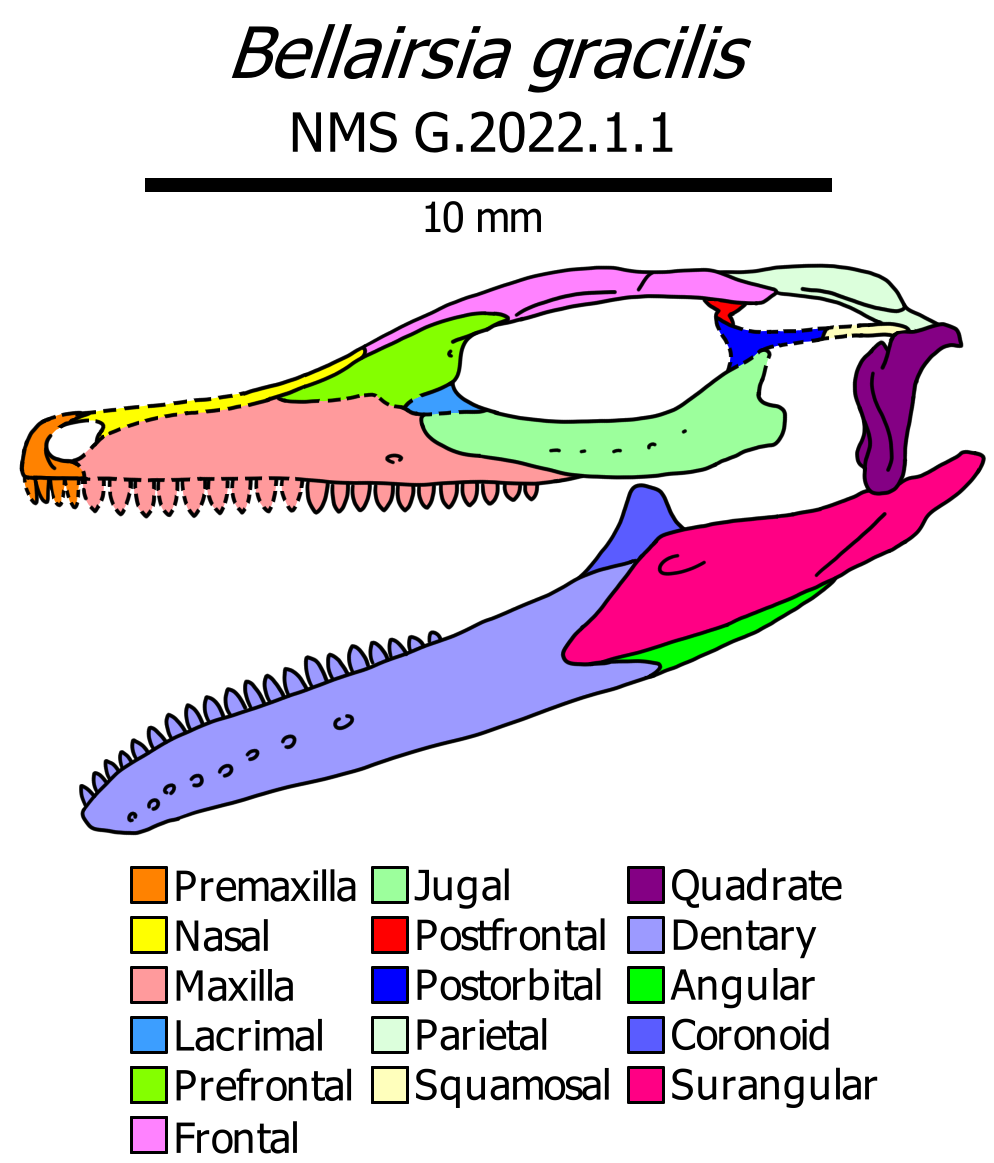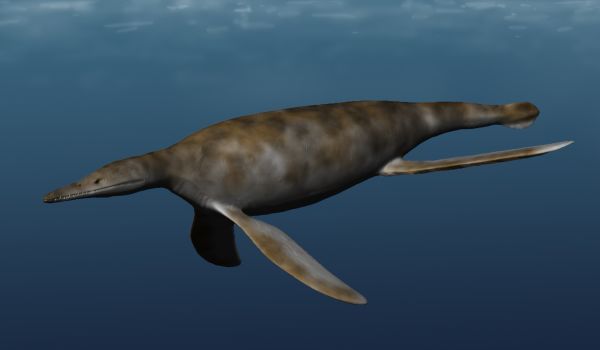|
Eileanchelys
''Eileanchelys'' is an extinct genus of primitive turtle from the Middle Jurassic ( Bathonian) period some 164 million years ago of Britain. Only one species is recorded, ''Eileanchelys waldmani''. It is the best-represented turtle from the Middle Jurassic, because of the amount of specimens that can be assigned to it. The turtle is also one of the oldest turtles ever found to be aquatic, and might represent a milestone in turtle evolution. Discovery and naming In 2009, two specimens from the National Museums of Scotland, Edinburgh, including NMS G 2004.31.15 and NMS G 2004.31.16a–f, were found to differ from other turtles from the area and age. It was decided that they represented a new genus and species, and were named ''Eileanchelys waldmani'' by Jérémy Anquetin and his colleagues. The specimen NMS G 2004.31.15 was designated as the holotype, and NMS G 2004.31.16a-f, the paratypes. NMS G 2004.31.16 includes at least five, and possibly six, different individuals, all in ... [...More Info...] [...Related Items...] OR: [Wikipedia] [Google] [Baidu] |
Kilmaluag Formation
The Kilmaluag Formation is a Middle Jurassic geologic formation in Scotland. It was formerly known as the Ostracod Limestone for the abundance of fossil freshwater ostracods within it. The Kilmaluag Formation is very fossiliferous, with ostracods, gastropods, bivalves, trace fossil burrows, and vertebrate fossil remains. Vertebrate fossils include fish, crocodylomorphs, mammals, small reptiles, amphibians and some large reptile remains including dinosaurs and pterosaurs.Panciroli E, RBJ Benson, S Walsh, RJ Butler, TA Castro, MEH Jones, SE. Evans. 2020Diverse vertebrate assemblage of the Kilmaluag Formation (Bathonian, Middle Jurassic) of Skye, Scotland Earth and Environmental Transactions of the Royal Society of Edinburgh nline1-22 Geology The Kilmaluag Formation is Bathonian, and dates to around 167 million years old. It is part of the Great Estuarine Group of the Hebrides Basin, a series of sediments laid down as the land rose and fell in the area running between what is now m ... [...More Info...] [...Related Items...] OR: [Wikipedia] [Google] [Baidu] |
2009 In Paleontology
Arthropods Cephalopods Three new species of extinct Octopoda discovered in 2009. The species – '' Keuppia hyperbolaris'', ''Keuppia levante'', and ''Styletoctopus annae'' – lived about 95 million years ago, and bear a strong resemblance to modern octopuses, suggesting that the Octopoda order has remained relatively unchanged for tens of millions of years. The fossils included evidence of arms, muscles, rows of suckers, ink, and internal gills. The discovery was made by a team led by Dirk Fuchs of the Freie University, which is located at Berlin, Germany.Rare fossil octopuses found NBC News, March 18, 2009 The fossils were found at Hakel and Hadjoula, . [...More Info...] [...Related Items...] OR: [Wikipedia] [Google] [Baidu] |
Testudinata
Testudinata is the group of all tetrapods with a true turtle shell. It includes both modern turtles (Testudines) and many of their extinct, shelled relatives (stem-turtles). Though it was first coined as the group containing turtles by Jacob Theodor Klein in 1760, it was first defined in the modern sense by Joyce and colleagues in 2004. Testudinata does not include the primitive stem-turtle '' Odontochelys'', which only had the bottom half of a shell. A recent phylogenetic tree of Testudinata included Angolachelonia Angolachelonia is a clade of extinct turtles from the Late Jurassic to Paleogene of Eurasia. The group is defined as all taxa derived from the ancestor of the type genus ''Angolachelys'' and '' Solnhofia'', a definition that could potentially e ... and Testudines as sister-taxa and subgroups of Testudinata. Classification The cladogram below follows an analysis by Jérémy Anquetin in 2012. References {{Taxonbar, from=Q16114972 Reptile taxonomy Nori ... [...More Info...] [...Related Items...] OR: [Wikipedia] [Google] [Baidu] |
Proganochelys Quenstedti
''Proganochelys'' is an extinct, primitive stem-turtle that has been hypothesized to be the sister taxon to all other turtles creating a monophyletic group, the ''Casichelydia''. ''Proganochelys'' was named by Georg Baur in 1887 as the oldest turtle in existence at the time. The name ''Proganochelys'' comes from the Greek word ''ganos'' meaning 'brightness', combined with prefix ''pro'', 'before', and Greek base ''chelys'' meaning 'turtle'. ''Proganochelys'' is believed to have been around 1 meter in size and herbivorous in nature. ''Proganochelys'' was known as the most primitive stem-turtle for over a century, until the novel discovery of ''Odontochelys'' in 2008. ''Odontochelys'' and ''Proganochelys'' share unique primitive features that are not found in ''Casichelydia'', such as teeth on the pterygoid and vomer and a plate-like coracoid. ''Proganochelys'' is the oldest stem-turtle species with a complete shell discovered to date, known from fossils found in Germany, Switzerla ... [...More Info...] [...Related Items...] OR: [Wikipedia] [Google] [Baidu] |
Testudinata
Testudinata is the group of all tetrapods with a true turtle shell. It includes both modern turtles (Testudines) and many of their extinct, shelled relatives (stem-turtles). Though it was first coined as the group containing turtles by Jacob Theodor Klein in 1760, it was first defined in the modern sense by Joyce and colleagues in 2004. Testudinata does not include the primitive stem-turtle '' Odontochelys'', which only had the bottom half of a shell. A recent phylogenetic tree of Testudinata included Angolachelonia Angolachelonia is a clade of extinct turtles from the Late Jurassic to Paleogene of Eurasia. The group is defined as all taxa derived from the ancestor of the type genus ''Angolachelys'' and '' Solnhofia'', a definition that could potentially e ... and Testudines as sister-taxa and subgroups of Testudinata. Classification The cladogram below follows an analysis by Jérémy Anquetin in 2012. References {{Taxonbar, from=Q16114972 Reptile taxonomy Nori ... [...More Info...] [...Related Items...] OR: [Wikipedia] [Google] [Baidu] |
Cladogram
A cladogram (from Greek ''clados'' "branch" and ''gramma'' "character") is a diagram used in cladistics to show relations among organisms. A cladogram is not, however, an evolutionary tree because it does not show how ancestors are related to descendants, nor does it show how much they have changed, so many differing evolutionary trees can be consistent with the same cladogram. A cladogram uses lines that branch off in different directions ending at a clade, a group of organisms with a last common ancestor. There are many shapes of cladograms but they all have lines that branch off from other lines. The lines can be traced back to where they branch off. These branching off points represent a hypothetical ancestor (not an actual entity) which can be inferred to exhibit the traits shared among the terminal taxa above it. This hypothetical ancestor might then provide clues about the order of evolution of various features, adaptation, and other evolutionary narratives about an ... [...More Info...] [...Related Items...] OR: [Wikipedia] [Google] [Baidu] |
Testudines
Turtles are an order of reptiles known as Testudines, characterized by a special shell developed mainly from their ribs. Modern turtles are divided into two major groups, the Pleurodira (side necked turtles) and Cryptodira (hidden necked turtles), which differ in the way the head retracts. There are 360 living and recently extinct species of turtles, including land-dwelling tortoises and freshwater terrapins. They are found on most continents, some islands and, in the case of sea turtles, much of the ocean. Like other amniotes (reptiles, birds, and mammals) they breathe air and do not lay eggs underwater, although many species live in or around water. Turtle shells are made mostly of bone; the upper part is the domed carapace, while the underside is the flatter plastron or belly-plate. Its outer surface is covered in scales made of keratin, the material of hair, horns, and claws. The carapace bones develop from ribs that grow sideways and develop into broad flat plat ... [...More Info...] [...Related Items...] OR: [Wikipedia] [Google] [Baidu] |
Meiolania Platyceps
''Meiolania'' ("small roamer") is an extinct genus of meiolaniid stem-turtle native to Australasia from the Middle Miocene to Late Pleistocene and possibly Holocene. It is best known from fossils found on Lord Howe Island, though fossils are known from mainland Australia, New Caledonia, and possibly Vanuatu and Fiji. Taxonomy The genus was erected in 1886 based on remains found on Lord Howe Island, which Richard Owen assigned to the two species ''M. platyceps'' and ''M. minor'' (now a synonym of the former). These were the first good meiolaniid remains, and were used to show that the first known remains of a related animal, a species from Queensland now known as '' Ninjemys oweni'' (which was assigned to ''Meiolania'' until 1992), did not belong to lizards as initially thought, but to turtles. Woodward sank '' Niolamia argentina'' into ''Meiolania'', but this was not accepted by later authors. The species of the genus may be summarized as In New Caledonia, ''M. mackayi ... [...More Info...] [...Related Items...] OR: [Wikipedia] [Google] [Baidu] |
Condorchelys Antiqua
''Condorchelys'' was a genus of stem turtle from Early Jurassic Cañadon Asfalto Formation of Argentina. Only one species is described, ''Condorchelys antiqua''.Sterli, 2008 References Bibliography * Prehistoric turtle genera Bajocian life Aalenian life Toarcian life Early Jurassic reptiles of South America Middle Jurassic reptiles of South America Jurassic Argentina Fossils of Argentina Cañadón Asfalto Formation Fossil taxa described in 2008 {{Jurassic-reptile-stub ... [...More Info...] [...Related Items...] OR: [Wikipedia] [Google] [Baidu] |
Kayentachelys Aprix
''Kayentachelys'' ("Kayenta turtle") is an extinct genus of turtle known only from the "silty facies" of the Lower Jurassic Kayenta Formation in northeastern Arizona on the lands of the Navajo Nation. History of discovery and significance The earliest mention of turtles from the Kayenta Formation in the literature is within the description of the ornithischian dinosaur '' Scutellosaurus'' by Colbert (1981). These first specimens were collected during the 1970s and early 1980s by field parties from the Museum of Northern Arizona (MNA) and the Museum of Comparative Zoology (MCZ) at Harvard University. Specimens from these field excursions were used to establish the taxon ''Kayentachelys'' in 1987, and it is an MNA specimen (MNA V1558) which was designated as the holotype of the taxon. During the early 1980s, addition turtle specimens from the Kayenta Formation were collected by field parties from the University of California Museum of Paleontology (UCMP), which were repor ... [...More Info...] [...Related Items...] OR: [Wikipedia] [Google] [Baidu] |



